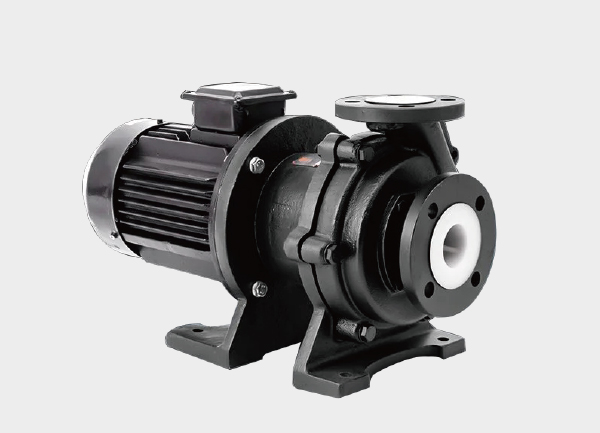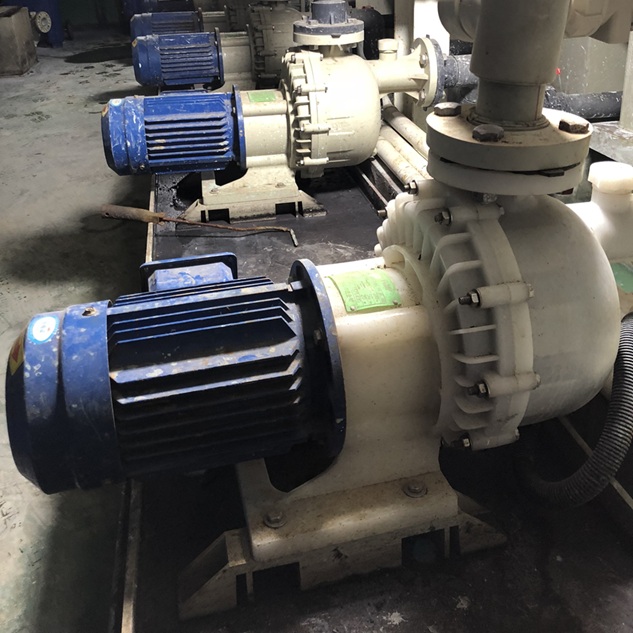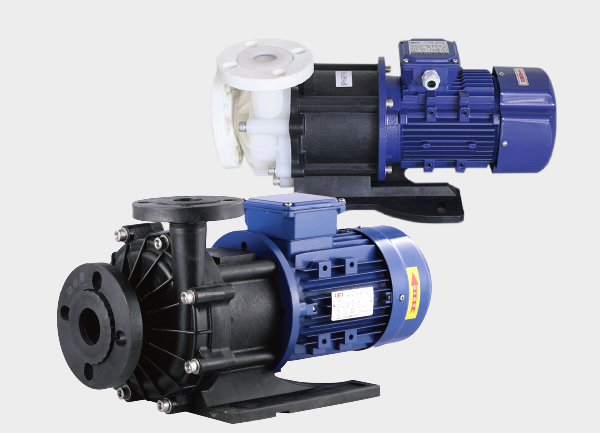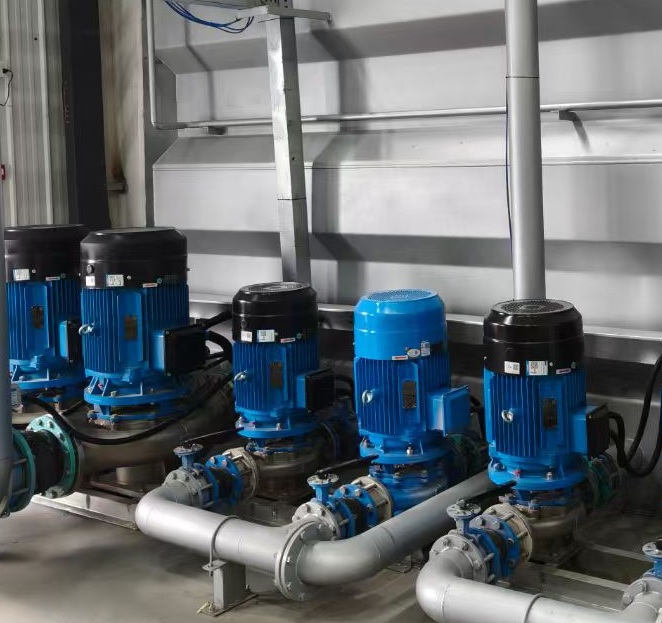Vertical centrifugal pumps and horizontal centrifugal pumps are the two major structural types of centrifugal pumps.
Their core difference lies in the orientation of the pump shaft — horizontal pumps have a horizontally mounted shaft, while vertical pumps feature a vertically mounted shaft.
This single structural distinction leads to major differences in installation, space utilization, maintenance, operating stability, and application scenarios.
Below is a detailed comparison.
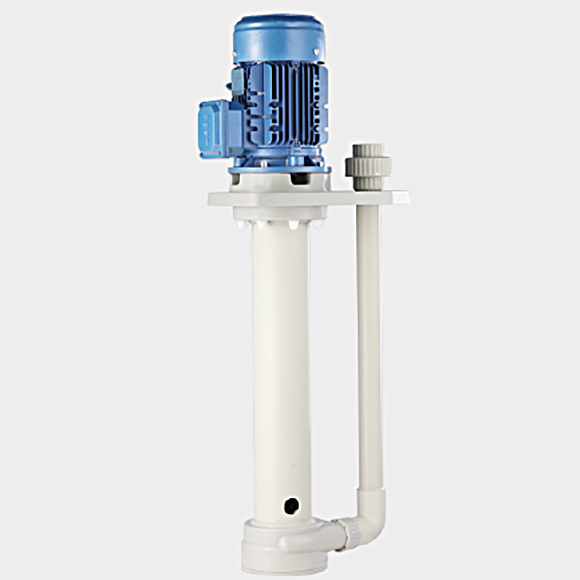
1. Structural Design
Horizontal Centrifugal Pump
The pump shaft is positioned horizontally, typically aligned with the motor shaft through a coupling.
Key components — impeller, casing, bearings — are arranged in the same horizontal plane.
A separate base frame (usually cast iron or steel) is required, resulting in a larger footprint.
This design is widely used for stable, ground-based installations.
Vertical Centrifugal Pump
The pump shaft is mounted vertically, with the motor usually on top of the pump body.
Impeller and casing are stacked along the vertical axis, creating a compact, space-saving structure.
Some types (such as submersible or inline vertical pumps) can be directly mounted on tanks or pipelines without a base frame, minimizing installation complexity.
2. Installation Requirements
Horizontal Type
Requires level installation with high precision in foundation flatness.
Alignment between pump and motor shafts must be exact to avoid vibration and bearing wear.
It occupies more floor space, though vertical clearance requirements are minimal.
Vertical Type
Requires vertical installation, with less demand on foundation leveling.
The motor and pump are often integrated, eliminating the need for alignment.
It occupies minimal floor area, ideal for narrow or confined spaces, but requires overhead clearance for maintenance or motor removal.
3. Space Utilization
Horizontal pumps are suited for facilities with ample floor space, such as factories or pump rooms. Maintenance aisles must be left for servicing.
Vertical pumps save horizontal space and are ideal for tight spaces such as shafts, pits, and building utility rooms — only top access is required for servicing.
4. Operating Characteristics
Horizontal Pumps
Feature a low center of gravity, resulting in stable operation and low noise.
The horizontally rotating impeller provides steady flow and minimal vibration.
The suction inlet is level with the shaft, reducing cavitation risk and ensuring smooth liquid filling.
Vertical Pumps
Have a higher center of gravity, making them slightly more prone to vibration and noise.
Smaller models perform well, but large vertical pumps may experience flow fluctuations.
The suction inlet is at the pump’s bottom — if the liquid level drops too low, air ingestion and cavitation can occur more easily.
5. Maintenance and Accessibility
Horizontal Pumps
Offer easy maintenance — key components such as bearings, impellers, and seals can be accessed horizontally without hoisting equipment.
Leaks and noises are easier to detect.
Lubrication and seal replacement are straightforward, reducing downtime and maintenance costs.
Vertical Pumps
Require vertical disassembly — the motor must often be lifted, and the pump body may need to be removed from a vertical pipe or tank.
Submerged or enclosed components are harder to inspect, and maintenance typically requires lifting gear, increasing labor and cost.
6. Application Scenarios
Horizontal Centrifugal Pumps
Best suited for:
Industrial circulation systems (chemical plants, cooling water, power generation)
HVAC chilled/hot water distribution
Municipal water supply and irrigation
Ideal for large flow, low to medium head, continuous-duty operations where stability and low noise are priorities.
Vertical Centrifugal Pumps
Best suited for:
Deep well or sump pumping
Sewage and wastewater lifting
High-rise building water supply
Compact installations near tanks, pits, or pipelines
Preferred when space is limited or when the pump must handle submerged or confined conditions.
7. Suction Design
Horizontal pumps can be single-suction or double-suction.
Double-suction designs handle higher flow rates and are ideal for large-capacity systems.
Inlet and outlet ports are on the same level for easier piping layout.Vertical pumps are mostly single-suction, as double-suction vertical configurations are structurally complex.
The inlet is typically at the bottom and the discharge at the top or side, requiring careful height alignment during installation.
8. Cost and Service Life
Horizontal Pumps:
Higher initial cost due to base and coupling requirements, but lower maintenance costs and longer lifespan thanks to stable operation and less wear.Vertical Pumps:
Lower initial investment, simpler structure, and no base frame needed — but higher long-term costs due to difficult maintenance and greater vibration-related wear.
9. Special Vertical Pump Types
Submersible Vertical Pumps:
Both motor and pump are submerged in liquid (e.g., sewage, deep wells).
These save surface space but require high waterproofing standards and full lifting for maintenance.Inline Vertical Pumps:
Mounted directly on a pipeline — ideal for building water supply systems.
The pump’s flanges match the pipe diameter, achieving maximum space efficiency.
10. Cavitation Considerations
Horizontal pumps: Maintaining a liquid level above the pump shaft minimizes cavitation risk — suitable for stable-level applications.
Vertical pumps: When the suction port is above the liquid level, air intake and cavitation can occur.
Using a liquid level controller or self-priming vertical pump is recommended to prevent this issue.
11. Selection Recommendations
Choose a Horizontal Centrifugal Pump when:
There is sufficient floor space
Low noise and high stability are critical
Continuous, large-flow operation is required
Ease of maintenance and long service life are priorities
Choose a Vertical Centrifugal Pump when:
Installation space is limited
Pumping from tanks, pits, or wells is required
Flow demand is moderate and head is medium
Budget constraints favor lower upfront costs
Conclusion
The horizontal centrifugal pump excels in stability, reliability, and ease of maintenance, making it ideal for industrial and municipal large-flow systems.
The vertical centrifugal pump, on the other hand, is valued for its compact, space-efficient design, serving tight-space, submerged, and building applications.
There is no absolute superiority between the two — the best choice depends on your specific site conditions, flow requirements, and maintenance capabilities.
Proper selection ensures optimal performance, energy efficiency, and operational longevity.



